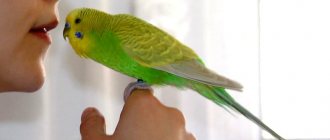- home
- Care
17.07.2018
Animals that carry out various commands always arouse increased interest in humans. Not only cats and dogs can be trained, but also rodents. Many breeders do not know how to train a hamster. The training of the dzhungarik is based on the actions that he performs independently.
What tricks can a hamster do?
When planning a hamster's training schedule, you should not include the ability to give a paw, run after a stick, or jump over a barrier. A hamster's brain is much smaller than that of a dog, cat or guinea pig. It is unlikely that he will master skills that are so different from his usual activities.
You shouldn’t underestimate the intelligence of animals either. A well-known expert in the rules of training, Karen Pryor, even got chickens to dance movements at a certain signal. The method of positive reinforcement works with any creature, from humans to hamsters.
It’s not difficult to figure out how to train a Syrian or Djungarian hamster, the main thing is your own knowledge and discipline.
Taming a pet
How to tame a Djungarian hamster if it squeaks? Squeaking is a protective reaction of the body. The baby shows that he is unpleasant about the owner's intrusion into the cage; he tries to defend himself, scaring the stranger with a desperate squeak.
What to do in this case? Of course, you cannot grab the baby in your arms against his will. You should do this:
A treat is placed on the palm, and the hand is carefully lowered to the bottom of the cage. As soon as the rodent becomes interested and approaches, you should not immediately cover it with your second hand
You need to give the pet time to get acquainted with the owner's palm. Dzungarik will sniff the hand and maybe taste it. You need to be prepared for this and try not to pull your fingers away at the most inopportune moment. If you're worried about getting hurt by your pet, consider a glove. After the baby sniffs the hand, he will take a treat from it. This is a small victory for the owner. And even if the hamster does not immediately climb into the palm of your hand, he will begin to get used to it - the owner’s hand will no longer frighten the baby.
Let's figure out how to tame a hamster. This is a simple process, which, however, requires patience on the part of the owner and a certain amount of time. The entire process of taming a miniature rodent can be roughly divided into several stages:
First, the pet is given time to settle in
At the same time, it is important to stay near the cage for 30-40 minutes. During this time you can do some reading or handicrafts.
There is no need to look closely at the rodent. This will most likely scare him. After the pet begins to boldly leave the house, despite the outside presence, you can move on to the next stage. After the pet has become more courageous, they begin to talk to him: they talk about how the day went, about plans for tomorrow, and sing the tune of their favorite song. It is important that he knows the voice and is not afraid of it. At this stage, the hamster needs to be coaxed. This can be done through treats. You should not immediately try to feed the rodent from your palm. First, he is given goodies through the mesh bars. These can be dried fruits or seeds. Then they begin to feed the pet through the slightly open door. However, you cannot put your hands in the cage. As soon as the small rodent runs for sweets without fear, it is allowed to stick your hand into the cage while feeding. There is no need to rush to pet the hamster: he should touch your palm first and get used to its smell. Now you can start feeding your pet from the palm of your hand. The treat is placed on an open palm in such a way that the rodent cannot reach it without stepping on the palm with one or two paws. At first he will approach you with caution. There is no need to try to speed up the process by moving your palm towards the rodent. Patience is required at this stage. At the last stage of taming the hamster, treats are given to him in such a way that he can get them only by fully climbing into the palm. As soon as the rodent climbs onto your palm without fear, you can try to lift it off the floor. Most likely, the first attempt will end in failure, and the pet will jump from the palm and hide in the house. However, after 4 or 5 times he will become more trusting and understand that the person does not pose a danger to him.
How to achieve success in training?
- Age. For successful training, the age when the animal is most receptive to learning new skills is important. You can start training when the hamster is two weeks old. The most favorable age for training is up to 3 months. After three months, the hamster develops a behavioral pattern. It doesn’t matter whether it’s Dzungarian or Syrian, he will perceive training as bullying.
- The most suitable time for training is the evening, when the pet is most active, has had a good night's sleep and had a light snack. You need to wait until the hamster gets enough sleep, climbs out of the nest and starts wandering around the cage. A sleepy creature that is forcibly awakened will not be responsive to new demands. You need to be attentive to the state of the animal: during periods of ill health, mating games and pregnancy, the hamster can be nervous and show aggression.
- The trainer must be clean. Unfamiliar smells can distract or frighten a tiny student. Hamsters' sense of smell is well developed; they can easily smell fish, bleach or perfume on the hands and body of the owner.
We train correctly
In order for animal training to give a positive result, you must adhere to the following rules:
- Adapt to the biological rhythm of the animal. It is necessary to take into account the periods of their activity and the time when the hamster is passive. It is better not to touch the Syrian hamster during the day; he is active and energetic in the evening. A sleepy hamster is difficult to train.
- Pay attention to the rodent's behavior. It is better to leave an aggressive and hissing animal alone. If the hamster crawls around the cage or washes itself, you can start training.
- Rodents should not be trained during the mating season or during pregnancy. During such periods, hamsters become irritable and inattentive. They find it difficult to concentrate.
- Training a Djungarian hamster after ten months is quite difficult. He has already developed certain habits that will be difficult to change.
- Overfed and hungry animals are difficult to train. Before training, it is better to feed the rodent a little.
- Pay attention to clean hands. The foreign smell irritates and distracts the animal from training.
- Avoid extraneous noise. A loud, sharp sound causes stress in the baby and distracts attention. Training should be easy and associated with the game.
- Do not punish or yell at your pet. Hamsters are vulnerable and touchy animals; a raised tone can frighten them. Punishment will discourage the desire to follow commands.
- During training, remain alone with the rodent. The training will give positive results if it takes place without strangers. There should be no other people or pets nearby.
Article on the topic: Mineral stone for hamsters, what twigs can be given to a hamster
The right start
It is impossible to teach a hamster difficult tricks if he does not trust his owner. How can you train a hamster at home if it is scared and has nowhere to run? The first and most important thing is to tame your pet. He should not be afraid of the owner, break out, hide and bite.
Calm behavior, careful care, treats, a pleasant smell and a quiet voice will help a person gain trust, and pretty soon the hamster will be willing to be held.
Important: even a small and defenseless baby hamster should not be picked up by force. If an animal bites and runs away, it means it is panicking. Fear destroys contact with the owner. You need to start acquaintance by offering a treat.
Let the animal first come up and eat next to your hand, then steal the treat from the edge of your palm, and gradually climb onto your hand. A trusting relationship between the owner and the pet will be the best stimulant for the animal.
Errors
It is important to eliminate errors so that possible problems are avoided. If you get too carried away with upbringing, you can discourage the animal from wanting to learn and make contact. Training a hamster is possible only within the framework of mutual joyful communication, otherwise contact can be lost forever.
You shouldn't punish your hamster, it won't help. A long hunger strike, and even more so physical punishment, will scare away your pet.
Strangers, animals, and strong odors can frighten the hamster and distract him from his activities.
Raising your voice at an animal is unacceptable.
Feeding your hamster to capacity before training is a big mistake. The animal will become sleepy and lose incentive to work.
You should not demand a higher education diploma from your furry pet. If you use training elements for pleasant communication with the animal, listen to its mood and do not frighten it, the hamster will probably master several tricks. Trained pets bring a lot of positive emotions, so it's worth exploring the talents of your furry friend.
Simple tricks
Simple tricks are available to almost every animal, the main thing is patience and regular practice.
- Knowing your nickname. One of the most important skills is to recognize your name. If an animal comes when called, it is easy to find. Hamsters often run away and hide, so it is convenient if a hungry traveler crawls out of his hiding place to his owner in the hope of a snack. The hamster's name should be simple and short, easy to remember. You need to pronounce the chosen name as often as possible in a calm voice, especially in moments when the hamster is happy. If they pet him, feed him, and communicate with him, it is much easier for him to remember an unfamiliar word. If you say a name every time food is offered, the smart animal will remember it and will come out when called.
- Run. A hamster can be taught to run in a circle if you offer it food and carefully move a piece of your favorite treat over the hungry animal. After two or three laps, be sure to give him a tasty treat, so he will gradually learn to run laps before feeding again.
- Stand. Hamsters have the ability to stand on their hind legs, so simply teaching them to stand up on command is enough. To do this, you need to hold the treat over the animal. After waiting for him to get up to get his dinner, you need to say the command “Stop!” several times. After several trainings, the hamster will understand what they want from him. It is very important to reinforce successes with treats and praise the animal.
Common commands for rodents
Any breed can be trained
Many people are interested in how to train a Djungarian hamster and an ordinary hamster. In fact, they are both equally trainable. There is no difference between the species and the system of their training.
The basic level of training is that you teach the animal to respond to its name and other normal actions. To teach a rodent to respond to its name, you need, firstly, to choose it as short as possible, and so that it contains some hissing sounds. And contact him as often as possible, then after a while the animal will respond to its name.
Independent exit from the cage
This exercise is perfect for a cage that has a side door. Open the door and place a treat outside the door and tell the animal: “Go for a walk.” And repeat constantly while the rodent moves towards the treat.
Article on the topic: How to find a turtle in an apartment if it ran away and got lost
It is clear that the animal will not immediately perform such actions. This requires patience, so wait a bit. As soon as the animal begins to do all this automatically, then next time say the words, open the door, but you no longer need to put treats.
Sometimes hamsters get so used to this that even if the door is closed, but you say the command, the rodent will still run.
Standing at attention
Just imagine, your animal is standing on its hind legs! It’s interesting, really, but not all people know how to train a hamster for such a trick. In fact, it’s not difficult to teach a rodent this trick. It is necessary to do 4 steps in turn.
- You need to place the animal on a table or bed.
- Take something tasty for the animal.
- Place the treat in your hands and bring it 1-2 cm above the rodent.
- Now all you have to do is wait and constantly say the word: “Stand.”
Very soon the animal will become very interested in what you have there and, having learned that there is something tasty there, will constantly rise on its hind legs. Give the hamster some sweets for the first few days, then take it away and watch the animal stand on its hind legs.
Drawing figures
This is one of the most interesting tricks when a hamster runs after its owner's hand. You don't need anything special for this. First, put some kind of treat in your hand, but it must have a good and persistent aroma so that the rodent can hear it.
After the rodent leaves the cage, place your open palm in your hand to the animal's nose so that it can understand that there is something there. Then slowly move your hand over it, and wait for the rodent to follow it.
Article on the topic: What to do if you are bitten by a hamster until you bleed
The first couple of days everything should happen with the treat, then remove it and see how the rodent reacts. After a while, the pet will run after your hand. Remember the main rule after performing a trick - the animal must receive a reward, it cannot be otherwise.
Somersault
It will be very easy to perfect this trick on a trained hamster. But you need to be patient, since this trick doesn’t work right away. To perform such a somersault, you need to put your pet on his back, and the treat in front of him.
Sooner or later the rodent will jump to get the treat. This is not easy and it requires endurance. It doesn’t work out right away, you need to train every day and then after a while the animal will delight you with such an interesting trick.
Sources:
https://homjakam.ru/uhod/kak-dressirovat-homyaka https://tvoihomiak.ru/mir-khomyaka/kak-dressirovat-homyaka.html https://slonvkvartire.ru/homyaki/kak-dressirovat.html
Advanced tricks
In some cases, it is possible to teach a hamster more complex actions, but a significant part of lazy and cunning animals may refuse to learn.
In this case, there is no need to insist so as not to end up with an aggressive and biting pet.
- Jump! Training for this command is similar to the previous one. By making your hamster jump for a treat, you can gradually accustom him to the “Jump” command. This funny skill can be beneficial for an animal prone to weight gain, but you should still not overuse jumping on command.
- Ugh! Knowing this command can be useful for the hamster. If he doesn’t listen, tries to eat something harmful or climb into something he shouldn’t, he needs to say “Ugh!” and limit his actions.
- Sit on your shoulder. You need to start with shoulder feeding. The owner must remain still and calm at this time. The hamster needs to be placed on your shoulder and held with your hand so that the animal feels safe while it eats. If the animal is uncomfortable, gets nervous and tries to get off, you need to immediately return it to the nest, as the most comfortable place for it. Over time, the hamster will begin to willingly climb onto your shoulder.
- Coup. If you put a flat slice of apple on the animal’s back, it will first have to roll over onto its back and then stand up on its paws. Sometimes it is possible to consolidate this trick with an animal.
- Hoop and barrier. A jumping jungarik can be taught to jump through a hoop. A hamster jumping circle approximately 5 cm in diameter is secured in front of the desired treat. The height should be about one cm, otherwise the cunning animal will simply crawl under the hoop. In the same way, you can teach the animal to jump over a small obstacle with the command “Barrier”. The Syrian hamster jumps low. If he does not show a tendency to jump, it is better to offer him another activity.
Learning more complex commands
More complex tricks include the commands “Ugh!”, “Find!”, “Jump!”.
To teach your pet to jump on command, you need to smoothly raise and lower the treat over his head, repeating the word.
When your pet does the wrong thing, bites or hisses, repeat the command “Ugh!” This trick needs to be constantly practiced.
To teach the command “Find!” we need a labyrinth. Place your rodent's favorite treat in it and send him looking for food. The command must be repeated constantly.
You can teach your pet to go through an obstacle course. Place ladders, cubes, and various pipes on his way. Move your hand with a piece of food in front of the hamster, and it will move along the desired trajectory. Over time, add obstacles, making it more difficult to pass the lane.
Article on the topic: Hibernation of turtles at home: how and when turtles go into hibernation (photo)
Another interesting trick is lifting the barbell. It can be made from a straw, placing carrot pieces on the sides. The appetizing smell and your command will make your pet lift the barbell with his mouth.
A hamster can be taught to sit on your shoulder if it can sit on your palm. Bend one arm at the elbow, placing your favorite jungarik delicacy in the other. Place a piece on your shoulder and entice the rodent. He will climb up your hand to eat the treat. When the pet quickly performs this action, lure it with food, but do not leave it on your shoulder.
Some breeds of hamsters are very jumpy, so they can be trained to jump through hoops. It is better to use a hoop with a diameter of 7–10 cm, placing it a centimeter from the floor. The ring should separate the animal and the piece of food. This trick must be repeated daily.
If your pet easily performs tricks, combine them into one performance.
A trained hamster is quite a funny sight, but it takes a lot of time to train. Training must be done daily, repeating tricks periodically. Don't forget to praise your rodent, encourage him with kind words and encourage him with his favorite treat. Only by being patient can you achieve results.
The key to successful training: basic rules
To avoid mistakes and for the most effective learning of your child, you should:
- avoid noise – training should be a fun game for your pet. Loud or sharp sounds can frighten the hamster, and interest in the game will disappear;
- no whips, only carrots - hamsters cannot be punished, small rodents are very vulnerable, and in the future training will cause an association with punishment;
- don’t force it - if your pet is busy with his business (eating, sleeping, playing, relieving himself), leave him until he finishes. Violating the animal’s personal space at these moments will only cause aggression and irritation;
- remove strangers - the presence of strangers or animals will distract the animal. You will achieve good results if you are alone and pay attention only to home;
- feed the hamster - a hungry animal is not able to absorb and remember information;
- Recommendations regarding classes: new tasks should be received in doses, without haste; Call your pet by name when feeding or while playing;
- develop a reflex: repeating the name of the command several times, you can develop an association: a certain word = a certain action;
- during training, monitor the volume of your voice and intonation, speak quietly and gently, do not show annoyance or irritation;
- if you are learning several skills at once, keep the sequence, this promotes quick memorization;
- it is advisable to systematize training by conducting classes every day at a certain time;
- remember the most important rule of training - praise, reward your animal for diligence;
- start with simple commands, gradually complicating and expanding them.
Combining techniques
If you have a question about how to train a hamster to create an entire circus routine, then this chapter is for you. For this purpose, tricks are selected that do not tire the animal too much, so the performance lasts no longer than 7 minutes .
This combination of tricks can be used at a rodent show:
- The hamster climbs out of the cage using a ladder.
- Overcomes the barrier.
- Describes a couple of circles or several figures.
- Climbs onto the owner's shoulder.
After each trick, the hamster should be rewarded with a treat.
Care and maintenance at home
Proper care and comfortable conditions will ensure that the animal will always be active, friendly and cheerful.
Selecting a cage and filling it
The animal should be provided with sufficient freedom of movement. The cage must be at least 50x30 cm. A small space will lead to low physical activity, which can cause limb failure. You should not choose a high cage, because hamsters love to climb its walls. Falls from heights are very dangerous for a hamster.
Due to the high risk of injury, multi-story cages or complex staircase structures should be avoided.
Sawdust from fruit trees can be used as filler. Needles cannot be used because they cause allergies, lead to breathing problems and death.
You can buy corn litter at the pet store. It is considered the most convenient.
The cage can be filled with undyed paper napkins or towels, which should be torn into small pieces.
For a Djungarian hamster, it is necessary to install a wheel; its diameter should not be less than 16 cm. A small design will lead to curvature of the spine, which can cause limb failure.
You need to put a rest house in the cage. The animal will sleep in it during the day. It is not recommended to use houses with windows, because hamsters often get stuck in them.
Cotton wool, hay, fabric are hazardous materials. They must be kept away from the rodent.
Nutritional Features
Water for the animal is poured into a vacuum or ball drinker. The fluid should be changed daily. Bowls are not placed in the cage, as a wet animal may get sick.
The Djungarian hamster is prone to diabetes. For this reason, you should remove all sweet foods from your diet. The list of unsuitable foods includes carrots, apples, corn, raspberries, peach, pumpkin, etc. Potatoes, baked goods, onions, garlic, and citrus fruits should not be given.
The hamster's diet should consist of dry and wet food. It is recommended to purchase the first one ready-made at a pet store. It is better to use expensive feed, because... they are more balanced.
You can feed the animal with cucumber, lettuce, cauliflower or parsley. All leftover food must be removed immediately. To compensate for the lack of protein, the hamster should be given boiled chicken meat without spices. Outdoor insects should not be offered as they are infested with parasites.
Hamster hygiene
The rodent carries out all hygiene procedures independently. It cleans its body with its paws and tongue. To make the process easier, you can periodically place a container of sand in the cage, which is sold for guinea pigs. Hamsters love to wallow in it for a long time.
You cannot bathe an animal of this species. Water is dangerous for them.
Hamsters fulfill their natural needs in one place, where you can install a toilet for them, which will make cleaning the cage easier.
In winter, dwarfs begin to molt. Their fur becomes lighter. The process lasts 6-8 weeks.
It is important to clean the cage regularly.
Health and prevention
Suitable fresh food, conditions for physical activity, the absence of another individual in the cage, cleanliness are the main conditions for a comfortable life for dwarf hamsters.
Animals should be protected from loud sounds and screams. Even a little stress can cause the development of diseases.
You cannot place the cage high. Direct sunlight is dangerous for animals, so you should not place your pet on a windowsill or other open place.
If the hamster has become apathetic, refuses to eat, or does not move, you should not expect health to recover on its own, or self-medicate. You must immediately contact a specialist.










